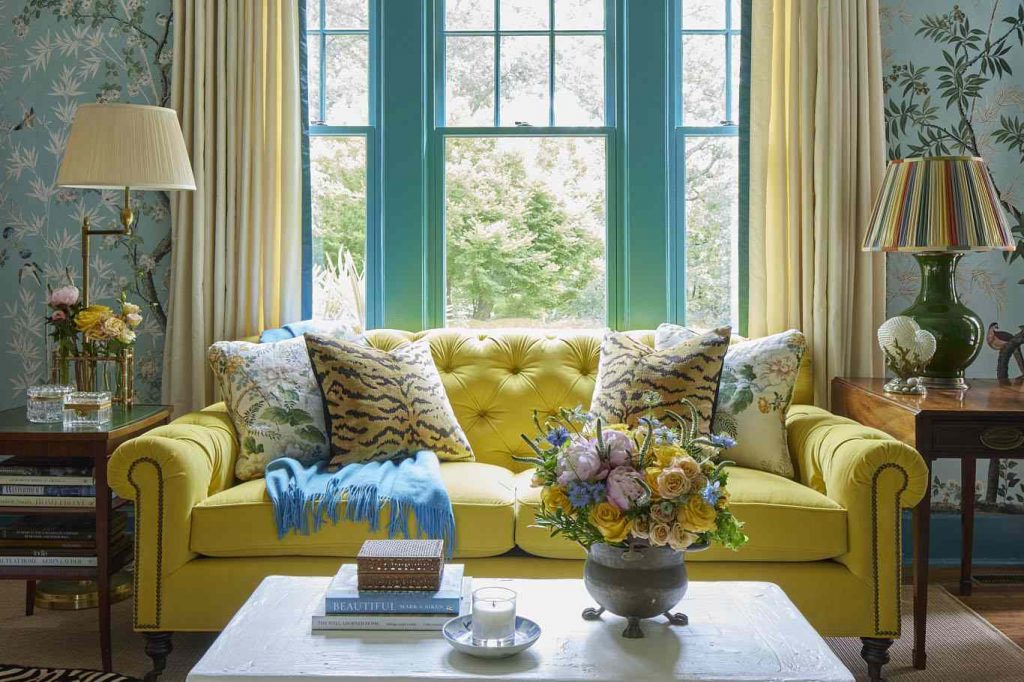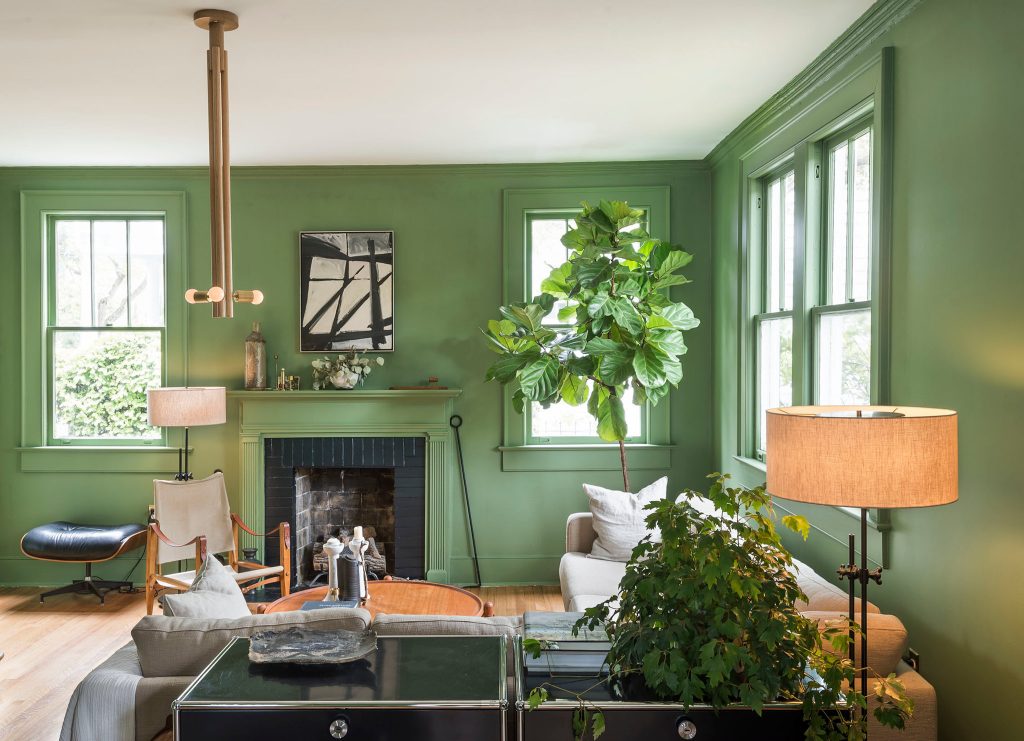It may be an exciting yet nerve-wracking challenge when you’re overwhelmed with options for decorating your house. When decorating, it’s simple to get swept up in the sea of options and suggestions, but one specific question could reappear from time to time, do all rooms in a house have to match?
Select a color scheme for the interior. Start with the necessities, mix and match to create a cohesive design, then add accessories or accents to express your sense of style. This is similar to how you would create a wardrobe.
Although you may have picked a basic decorating theme for your entire house, each room has a specific function and aesthetic. When arranging each room and selecting materials, decorations, and accents, remember how and by whom you will use the space.

Do All Rooms in a House Have to Match?
Wondering whether or not every room in your home should match? Not at all, no! Even though there are some instances where matching rooms can be advantageous, such as creating a cohesive aesthetic throughout the house, it becomes an issue when they all seem bland and uninteresting. It will be preferable for the overall aesthetic of adjoining rooms to match, depending on how the rooms are laid out.
To make a house feel intentional and complete without feeling overly matched, all rooms should share a color scheme of 3 to 5 colors and 1 to 2 design types. The house feels overwhelming, messy, and chaotic, with too many colors and designs. After covering the basics, let’s get a little more into the specifics so you can decorate your home to seem more harmonious.
Paint the rooms the same color
Keep the wall paint the same color across the house; this will help the house feel coherent but not overly coordinated. Applying a similar paint color throughout the house has various advantages. As you move from room to room, the same paint color makes it seem like you’re in the same house.
Your brain needs the spaces to make sense as a whole. Your brain will feel overloaded, and the entire house will feel disorganized and chaotic if one room is navy blue, the next is seafoam green, and the fourth is a stark gray. Instead, the rooms will flow better and won’t feel overly coordinated if they are all painted with a light neutral color, such as white, gray, or beige, and accented with colorful decorations.
Keep the hardware the same color
The same color should be used throughout the house for shower heads, sink faucets, cabinet handles, and door hinges. These elements will aid in making the rooms feel cohesive and flow together, much like the wall color.
If these metals are too heavily mixed and matched, you’ll struggle to stick to the 3-5 colors throughout the house. Your home will also appear carelessly put together rather than well-planned and purposeful.
Silver, gold, bronze, or black are all excellent base colors that mix well with various furniture and decor colors.
Don’t replace all the hardware in your home’s various colors simultaneously. Take your time, and replace one item with the new color you will use monthly.
Mix and match furniture colors
We also want to keep these neutral colors so they can coordinate with all the other colors you decide to use around the house because furniture is still an expensive area to replace frequently.
Similar to how we discussed the paint color, there are occasions when we purchase a piece of furniture for one room only to discover later that it works better in another. You may transfer the furniture if the rooms have a similar color scheme, saving you a ton of money and making the furniture and space feel brand new.
Mix and match decorations
The decorations are the simplest and least expensive things to replace as you become bored, the seasons change, or the fashions change. Throw pillows, throw blankets, lamps, novels, rugs, towels, and shower curtains are all reasonably priced items that you can change much more easily than your home’s furniture, hardware, and wall color.
To maintain the illusion that you are in the same house while still allowing for contrast from room to room, each room will have a decorative focal point that is unique from the next area.
If you perform this step correctly, you can quickly change the look of a room without spending a dime by moving your decor from one area to another anytime you need a refresh.
Read more: How to Make Your Home Feel Warm and Welcoming

Reasons Why All Rooms Don’t Need to Match
You can play around with colors
As long as you give each room its unique character by furnishing it with unique decorations and furniture, it’s okay to paint the entire house one color. A single wall color, like white or cream, will give the rooms a coherent appearance without making them dull or flat.
You can choose the style and theme
The benefit of choosing matching rooms is that it gives you more freedom to decorate your house any way you like.
Any area in the house can be designed in a particular theme or style; for example, if you want the kitchen to have a more traditional appearance, you can easily do this, even if the living room is more modern or a combination of the two.
Depending on the preferences and personalities of the people staying there, the bedrooms may completely contrast the living area and kitchen.
Those rooms might be easily decorated in a floral or even a coastal design, or if you’re feeling brave, you could mix elements of both styles to use in the rooms. If you decide not to have every room in your house match, you are given this option.
Change the room
It’s simple to make a space appear dull and stuffy by using the same furniture or colors throughout. For instance, a dark wooden table with matching dark chairs and dark floors will readily give the impression that the space is dark.
But if you replace the chairs with white ones, place a white rug under the table, and use light-colored curtains, the room will appear lighter and more spacious right away.
Pros and Cons of Matching Rooms
Pros
- Every space has a cohesive, overall look
- You can use one wall color across the entire house
- With various accessories, you can add color
- Open-plan homes will appear contemporary and themed
Cons
- Matching furniture will appear outdated and uninteresting
- Without unique furnishings and accessories, the rooms won’t have enough depth or dimension
- If the carpets, pillows, and bedsheets are all the same color, the rooms will lack uniqueness
- It will be clear that there is a lack of texture, size, patterns, and colors
- The same-colored furniture can make a space appear overly light or dark
- You won’t be able to decorate a room with various pieces of furniture
How to Avoid Room Matching?
Creating each room as a unique object is the best strategy to prevent room matching. In addition, when decorating, make sure to mix things up.
The living room
Use a different wall color than your furniture, but pick one that will either make the furniture stand out or fit in, depending on your taste.
Try to use chairs in a variety of sizes and designs. Use one long sofa, but add two chairs in an entirely different design that complements the room’s decor.
Make sure the throw pillows’ designs and textures do not coincide with those of your sofas. You could decide to use cushions of various sizes or just a few.
Bedroom
Make sure your bedside table and cabinets have two contrasting wood finishes. Add accessories and a large art print to the walls to give the space personality.
Additionally, unless you want to accessorize with a different color, you shouldn’t match the color of your bedding duvet to that of your curtains. Alternatively, you can decide to decorate the bed with blankets and pillows in a different color.
Also read: How to Furnish a Long Living Room
Conclusion
If you’ve ever wondered do all rooms in a house have to match, now you’ve got the answer. Designing a beautiful space is to make it appear a little spontaneous. Although they don’t have to match, the colors of your home should look well together. When developing a color scheme, you can combine unusual colors as long as the outcome complements your aesthetic.
Your home’s rooms should all have a similar aesthetic to link to one another and provide the impression of one coherent space. While you aren’t required to decorate in a particular style, there should be consistency in what you do.
Even if they are all neutrals, you should limit your color palette to as few colors as possible. Your home will feel more coherent overall if you use the same color in several different places. Due to the smooth transition from one room to the next, it also gives the impression that your house is larger.